A ray of light is incident on a thin film, As shown in figure, M and N two reflected rays while P and Q are two transmitted rays. Rays N and Q undergo a phase change of π. Correct ordering of the refracting indices is
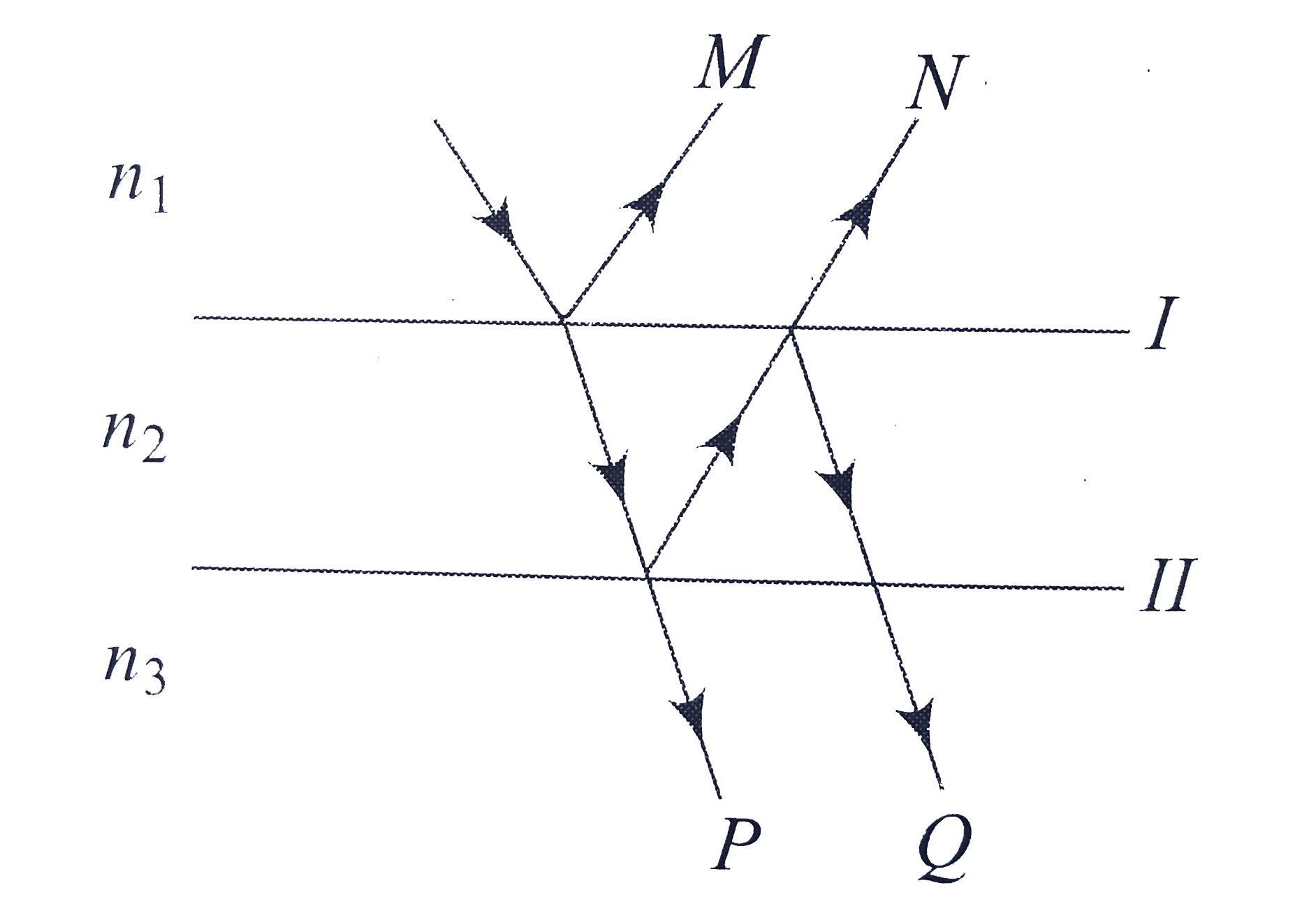
n2>n3>n1
n3>n2>n1
n3>n1>n2
none of these the specified changes can not occur
The correct Answer is:B
There is a phase change of x when the ray enters from rarer medium into denser medium, the boundary is called rigid boundary and also no change in phase when it enters into rarer medium.
Topper's Solved these Questions
- WAVE OPTICSBook:ALLENChapter:WAVE OPTICSExercise:Exercise 2 (Brain Teasures)
Explore 22 Videos
- WAVE OPTICSBook:ALLENChapter:WAVE OPTICSExercise:Exercise 3 (Miscellaneous type Questions)
Explore 27 Videos
- WAVE OPTICSBook:ALLENChapter:WAVE OPTICSExercise:Example 15
Explore 1 Video
- UNIT & DIMENSIONS, BASIC MATHS AND VECTOR Book:ALLENChapter:UNIT & DIMENSIONS, BASIC MATHS AND VECTOR Exercise:Exercise (J-A)
Explore 7 Videos
Similar Questions
A ray of light is incident on a thin film Two of the reflected rays are shown, and two of the transmitted rays are shown in figure. Consider phase difference by comparing them with the phase of incident ray on the film. Match statements about phase difference in column-I with the correct order of refractive indices in column -II
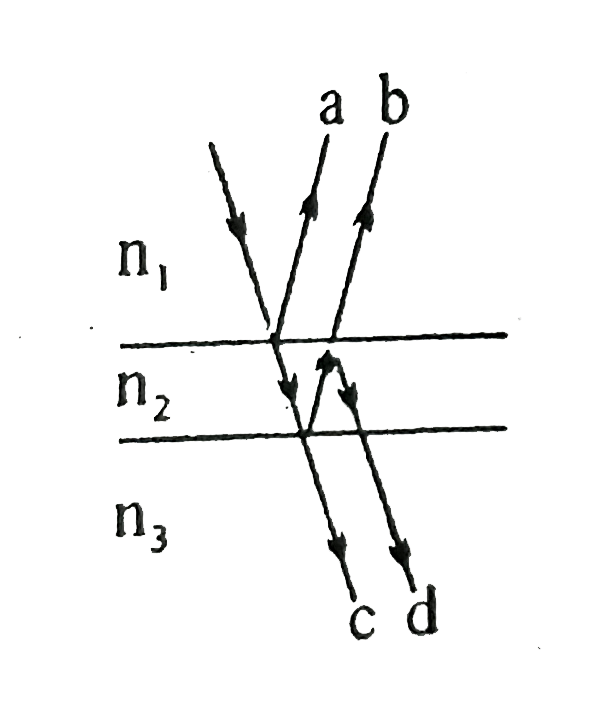
Column-IColumn-II(A)Rays a and b have an extra phase difference overand above that due to extra optical path caused by reflection at various interfaces(P)n1>n2>n3(B)Rays a and c have an extra phase difference overand above that due to extra optical path caused by reflection at various interfaces(Q)n2>n3>n1(C)Rays a and d have an extra phase difference overand above that due to extra optical path caused by reflection at various interfaces(R)n3>n2>n1(D)Rays b and c have an extra phase difference overand above that due to extra optical path caused by reflection at various interfaces(S)n1=n3>n2(T)the specified extra phase difference is not possible
View SolutionA converging beam of light rays incident on a glasa-air interface as shown in figure. Find where these rays will meet after refraction.
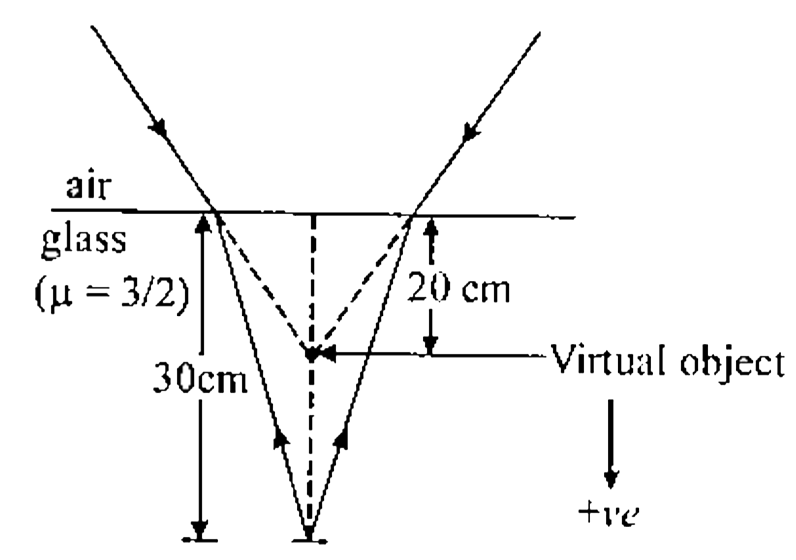
View Solution
Knowledge Check
A ray of light is incident on a parallel-sided glass slab as shown in the figure. The angle of refraction for this ray of light is likely to be :
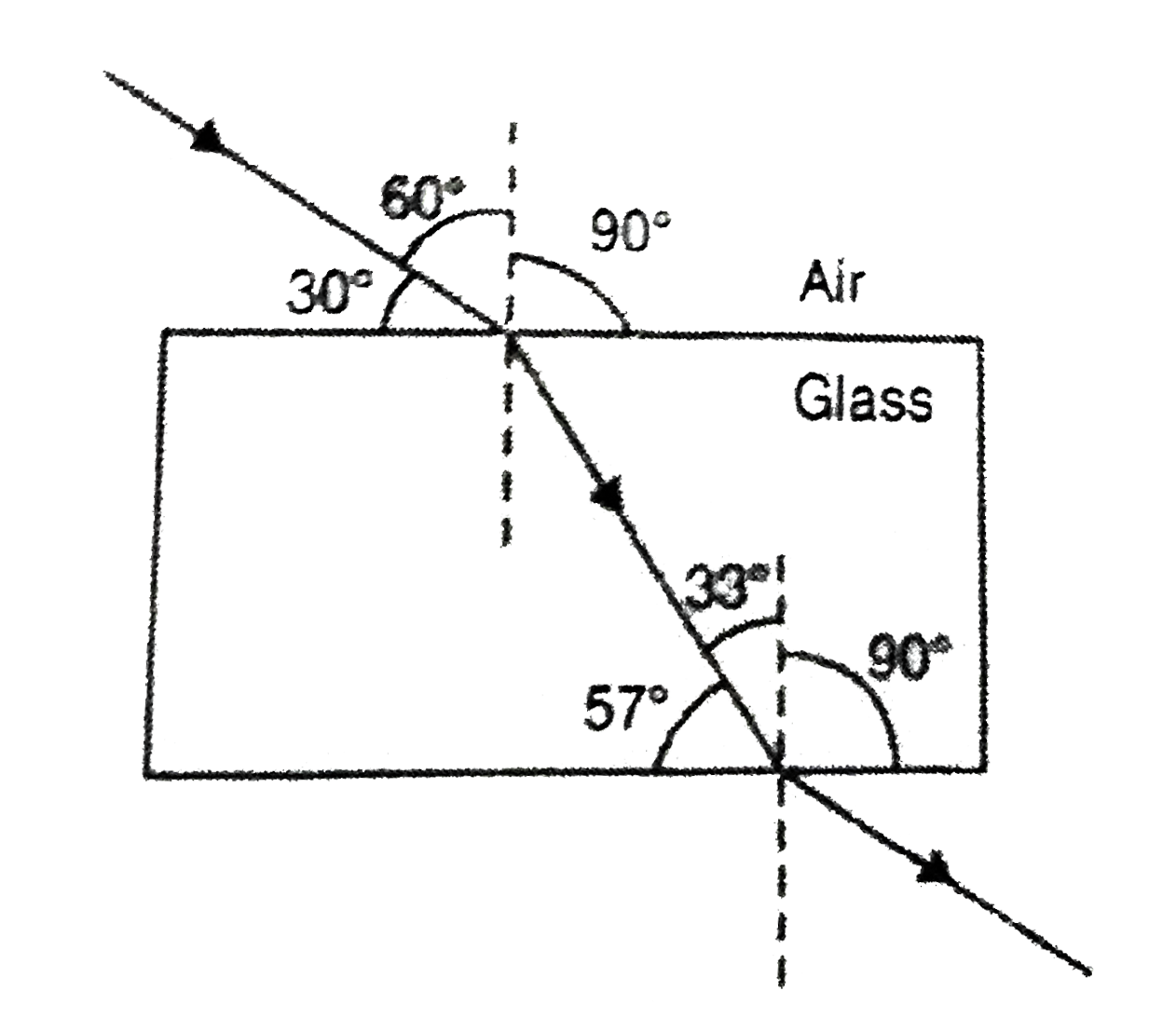 A60∘B33∘C57∘D30∘
A60∘B33∘C57∘D30∘A light ray is incident on a glass slab, it is partially reflected and partially transmitted. Then the reflected ray is
ACompletely polarised and highly intenseBPartially polarised and poorly intenseCPartially polarised and highly intenseDCompletely polarised and poorly intenseA ray of light is incident on a medium at an angle i. It is found that the reflected ray is at right angles to the refracted ray . The refractive index of the medium is given by
AsiniBcosiCtaniDcosec i
A ray of light is incident on the surface of water. For what angle, the ray will undergo total internal reflection ?
View SolutionA ray of light-is incident on glass at the polarising angle ip. Find the angle between the reflected and refracted rays.
View SolutionA ray of light is incident on a transparent glass slab of refractive index √3. If the reflected and refracted rays are mutually perpendicular, what is the angle of incidence?
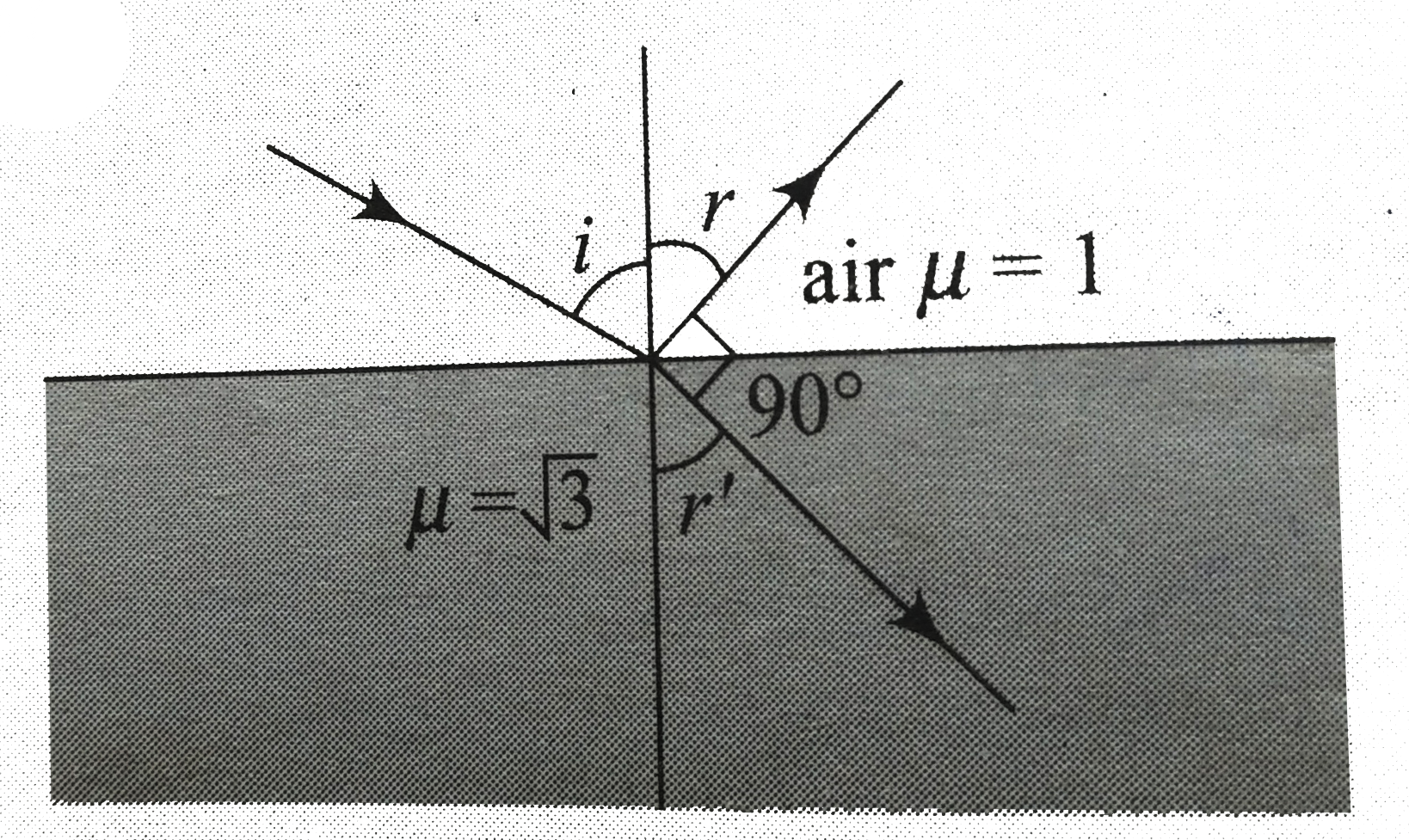
View SolutionIf a light ray is reflected from a mirror as shown in the figure, then
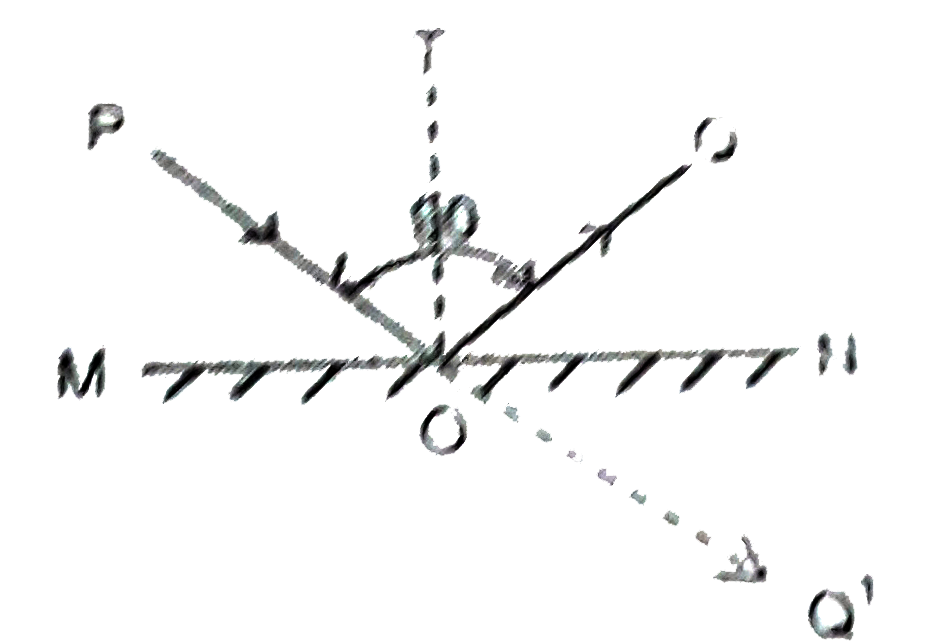
View SolutionIf a light ray is reflected from a mirror as shown in the figure, then

View Solution

